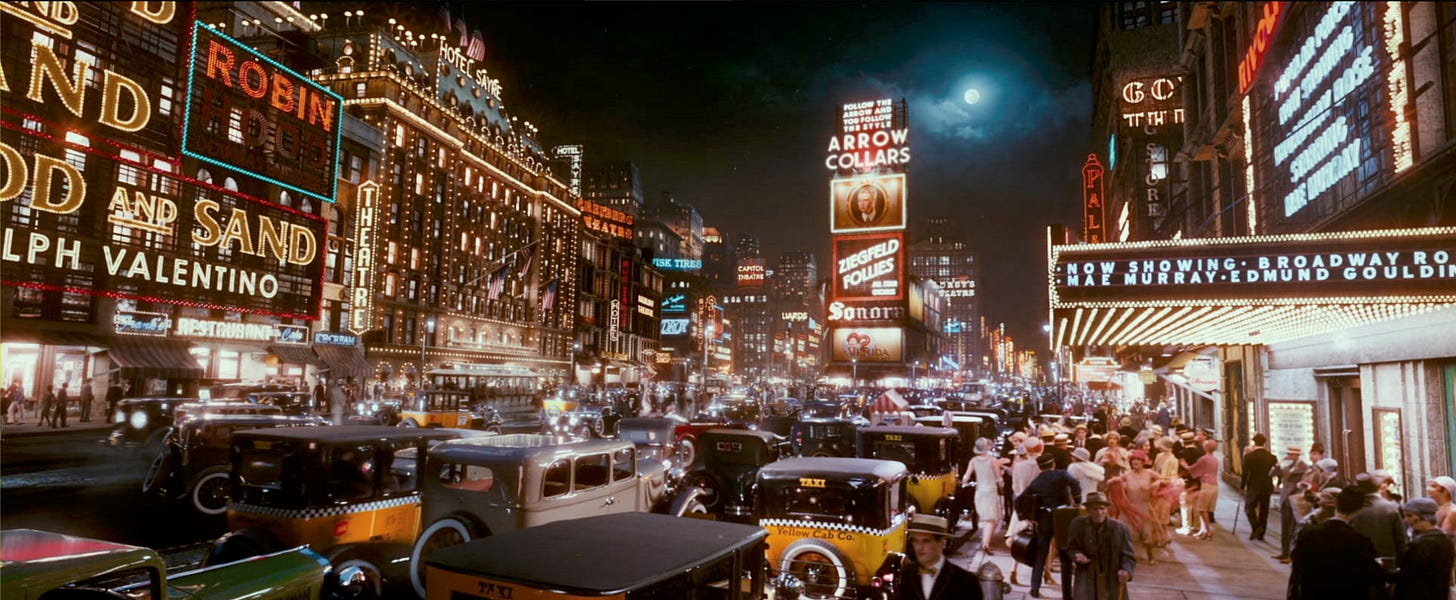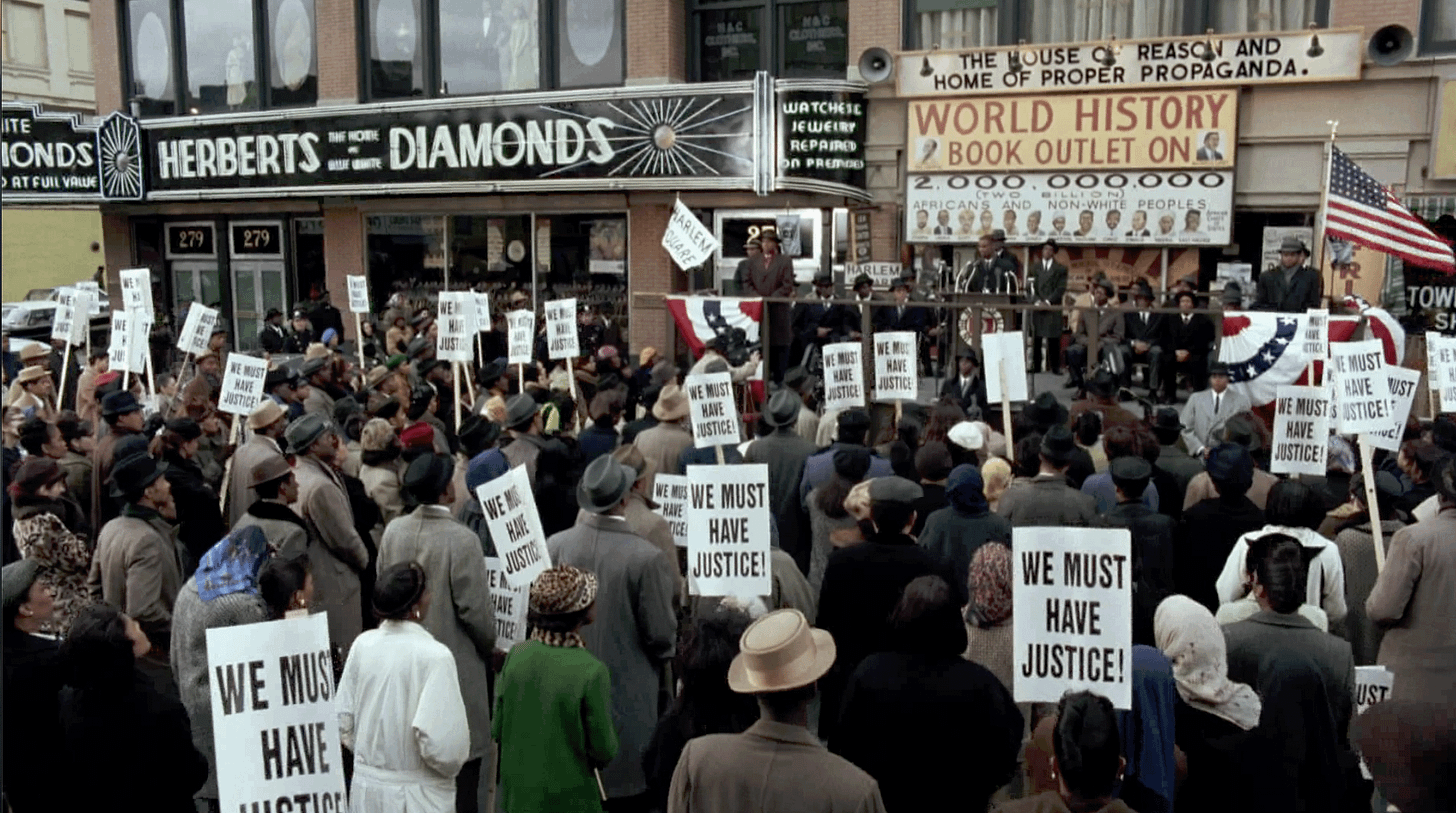Crafting a Film Graphic Design Portfolio
What to put in your portfolio if you want to get into the film industry
Beginner’s Series - Part 2
I became a film graphic designer by volunteering on independent low-budget films. Before that, I was a publishing and environmental graphic designer. I built a solid graphics portfolio to submit to the film union, with my real-world design work and the indy film graphic designs.
Your graphic design path may differ, but if you want to work in the film industry, you need a portfolio showcasing film graphics. Your portfolio should prioritize quality over quantity, focus on work tailored to the film industry, and showcase your design process (from concept to set). It also means having an up-to-date portfolio website that is easy to navigate and visually appealing.
Let’s explore what goes into a graphic design portfolio!
TABLE OF CONTENTS
Building your portfolio: Tips for every level
What is film graphic design?
What to include in a film graphic portfolio
How to organize a film graphic portfolio
How to expand your film graphic portfolio
Applying to a Union or Guild
Tips for Building a Film Graphics Portfolio
Entry Level / Student Graphic Designer
If you are starting to build a portfolio, ensure it showcases an understanding of graphic design basics, such as line, shape, color, texture, type, space, and image. In addition, your portfolio should include graphics such as logos, page layouts, posters, interface designs, typography, and illustrations. However, you must gain real graphic design work experience before applying to a film union. This work could include designs from a student or independent films.
Graphic Designer Transferring from Another Industry
Suppose you want to transition to film from another field. In that case, you’re already a skilled graphic designer in web design, interactive design, advertising, marketing design, motion graphics, animation, packaging design, illustration, publication, typographic design, or environmental design. You have solid design skills that work in a film and TV portfolio. However, for a graphic designer transferring from another industry, you must add film graphics showcasing set design skills and knowledge.
The Experienced Film Graphic Designer
If you already work as a film graphic designer, you have excellent knowledge of film design, but your portfolio may not reflect the type of work you want. You may want a job in a specific film genre, move into blockbuster movies, or even move up to a senior design position in the art department. Your portfolio challenge is repositioning your work to speak to your desired film jobs. Your portfolio needs new graphics in the genre you want to work in. However, building a new portfolio requires learning new design programs or skills to elevate your work.
To create a film graphic portfolio, you need a good understanding of what a film and television graphic looks like. There are two main areas that set film design apart from other graphic design displines.
So, what is graphic design for film and television?
Film Graphic Design is Storytelling
A film graphic communicates a function, a direction, a place, or a name. Moreover, a film graphic supports the story in the script. It helps show the audience how they should feel about the character’s experience. Sometimes, this is a bold visual; other times, it disappears from the viewer’s awareness.
Film Graphic Fabrication and Set Design
Ideally, your film graphic portfolio should demonstrate knowledge of film graphic design fabrication, film set design, and traditional graphic design skills.
A film graphic is fake.
A film graphic is quick to print or produce.
A film graphic uses alternate print and fabrication methods.
A film graphic is lightweight, safe, and easy to install and remove.
If that fits the story, a film graphic could be old, broken, or poorly designed.
A film graphic is made to be in a set or a temporary location.
A film graphic looks authentic to the genre, era and world they are featured in.

What to include in a film graphic portfolio
Here is a list of the types of graphics most commonly made for tv and film:
Set Design Graphics:
Set Design graphics are world-building designs that contribute to set construction and vehicles. These graphics showcase your knowledge of construction printing techniques, materials, substrates, manufacturing, and installation methods used in the film industry. Also, see sign types and vehicles.
To showcase world-building graphics, focus on a graphic-heavy set, such as hospitals, schools, corporations, city signage, government agencies, retail stores, restaurants, clubhouses, malls, hotels, police stations, prisons, or military bases that include a variety of graphics. These graphics demonstrate your knowledge of materials, printing or painting techniques, and installation.
Look at Avenue 5 below; it uses a logo, design motif, and a color palette to help build a set. Graphics are created as dimensional signage, vinyl signage, window graphics, flooring designs, costume patches, ID cards, badges, banners, flags, vehicle (spaceship) wraps, wall seals, packaging, posters, monitors, and digital screens, to name a few. See how often a graphic is used here in ADG’s Perspective Magazine.
Your portfolio could stand alone with just construction-type graphics.

Props
These graphics are made for an actor to handle. They offer an opportunity to showcase your design aesthetic in a particular genre, style, or era. Examples could include Victorian love letters with special stamps, a device with engraved alien icons or instructions, or a modern beer bottle label. Check out samples here.
Set Dressing
These graphics are made to decorate the set. Examples could include an old pile of comic books or magazines, open mail, food packaging, posters, store signs, street signs, and ephemera. Check out examples here.
Costumes:
These graphics will become a part of an outfit or uniform, including a military patch, sports jersey, school uniform, or graphic t-shirt. Check out examples here.
Illustration and Hand Lettering:
Ideally, these graphics are presented within a bigger context, such as an illustration on a Tarot Card, hand-lettering on a shop window sign, a children's book cover illustration, or murals on a building. Check out lettering here and examples of illustrations used for props here.
Playback:
These are screens, monitors, and VFX graphics created in the art department for the VFX department. Check out examples here.

How to organize a film graphic design portfolio
A design portfolio typically showcases your best 10-20 pieces. It’s well-organized and easy to navigate, with simple project descriptions.
LAYOUT
To layout your portfolio, ideally, include 2 stages of a graphic:
Final Design (Illustrator/Photoshop)
A final image, such as a set photo, film still, or Photoshop render.
See examples of before and after designs here.
LABEL
Label information for each graphic:
Name of the production, show type, and the genre
Type of graphic and how it is used.
How was it printed, constructed, and installation details. This is especially important if you mock up a prototype graphic for your portfolio.
EXAMPLE:
Show: Avenue 5, TV Series, Sci-Fi Dark Comedy
Graphic: Judd Galaxy - Construction Sign
Fabrication: Printed vinyl applied to Milk-Plexi sign (very light age)
Installation: Edge Lit Frame Mounted on Spaceship Set Wall
How to expand your film graphic design portfolio
Create something new.
Find a script or story and create your own graphics for a scene. For example, design a new Wonka bar and a golden ticket for “Willy Wonka and the Chocolate Factory” or new team logos for the “Mighty Ducks.” Ensure the graphic is labeled as a mockup or sample design and not passed off as authentic.
Repurpose a graphic from your current portfolio.
You may have several excellent logos that are suitable for film sets. For instance, if you have a business logo, try mocking up a sign for a fake storefront. Add complementary graphics and colors, and suddenly you are creating a world with graphics. Alternatively, take all of your doodles and sketches and showcase them as a sketchbook mockup. Check out these beautiful photos of pencil sketches (here). Think outside the box with the art and design you already have.
Volunteer for a student or independent film.
A great place to gain experience and build your portfolio is to work on smaller film rejects. However, before you commit to a film project, read the script and identify if there are any opportunities to design something that is portfolio-worthy. Share your ideas with the director to see if they align with yours. If the production doesn’t have the budget, consider paying for the graphics yourself. Ideally, you’ll walk away with a set photo or film still for your portfolio. The cost of printing and fabricating a graphic might be less than the price of a class, and you’ll gain practical film experience.
Need more guidance? Here are two in-depth articles worth reading:
Creative Bloq and Frame.
Applying to a Union or Guild
Every union or guild has its own specific requirements for obtaining membership, but here are some typical notes:
Meet the eligibility requirements: Most want to see a minimum number of years of professional experience in graphic design and experience working in film or tv production.
Some require sponsorship or a letter of recommendation by current members of the guild/union who have worked with them professionally.
Submit an application, which can be obtained from a union/guild’s website.
Provide evidence of work in the form of a resume and a portfolio that demonstrates skills and experience.
Application Review and/or Interview: A panel of art department members will review your work. Some unions/guilds may request an interview.
Approval of membership: If the panel approves the application, you will be invited to join the guild/union.
Unions or Guilds with Art Departments
Here’s a general list of links to help you look for the union or guild in your area.
International Alliance of Theatrical Stage Employees - USA IATSE
Art Directors Guild - ADG Los Angeles, Ca
International Alliance of Theatrical Stage Employees - IATSE - Canada
Directors Guild - DGC Quebec and Quebec
British Film Designers Guild - Art Directors Guild, UK
Next week: Part 3 of the beginners series: “Film Graphic Designers are Independent Contractors. What tools and equipment do you need on the job?”





